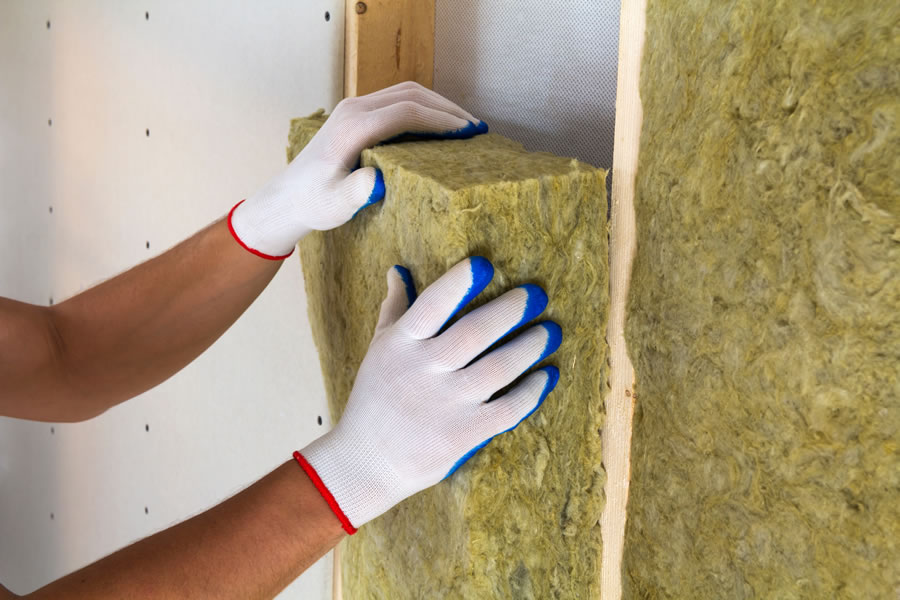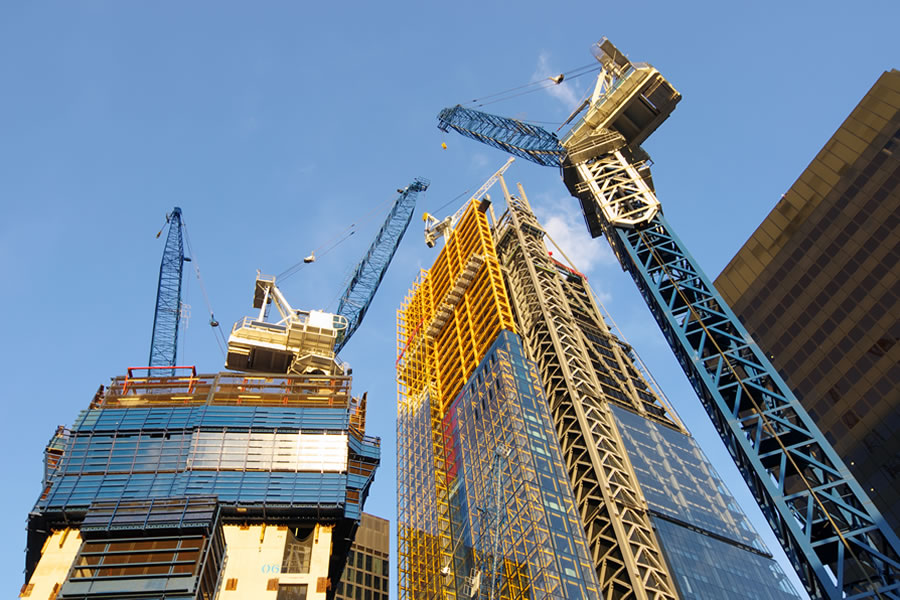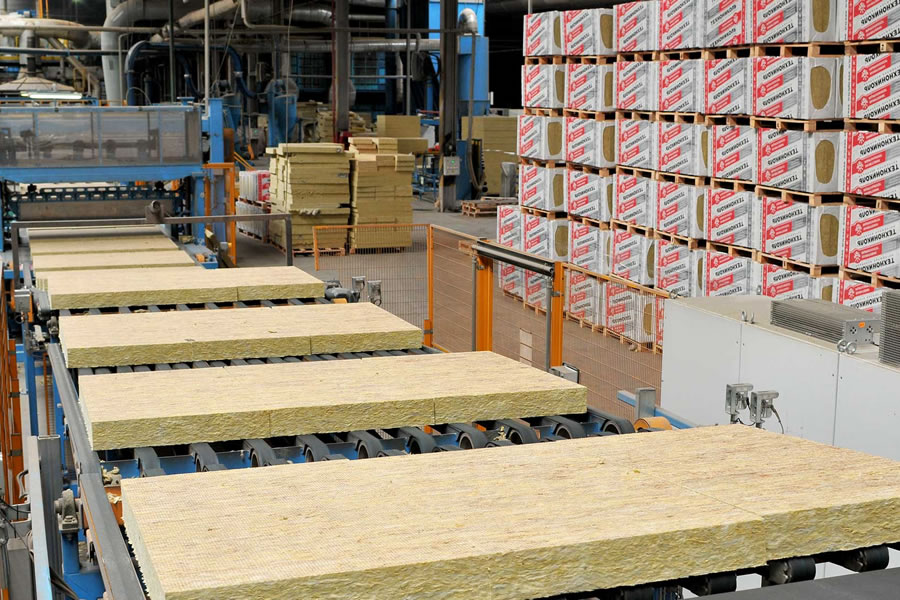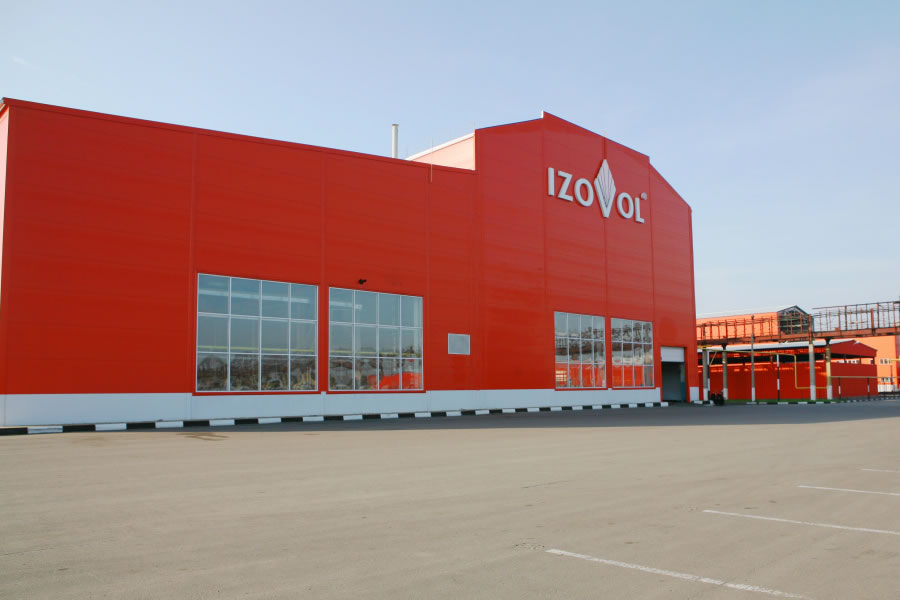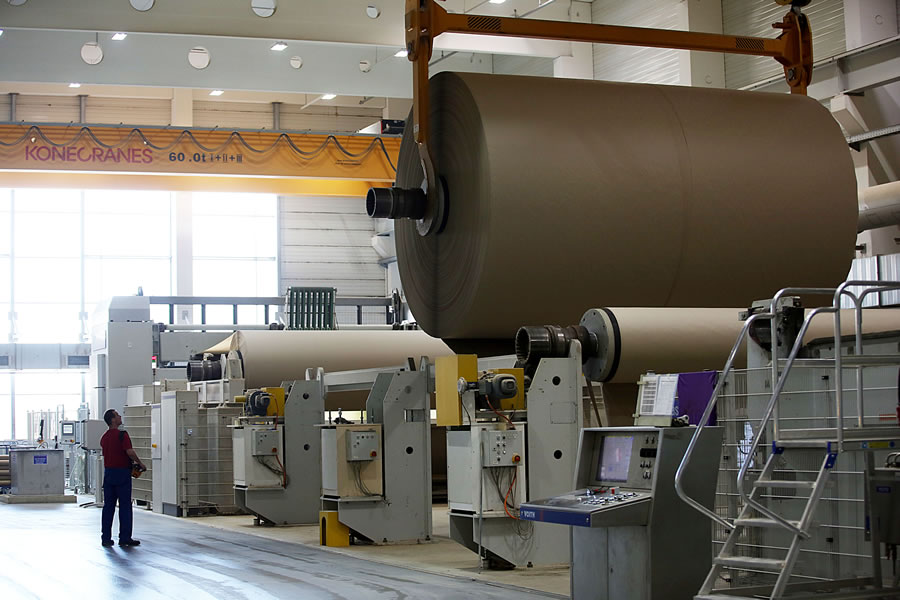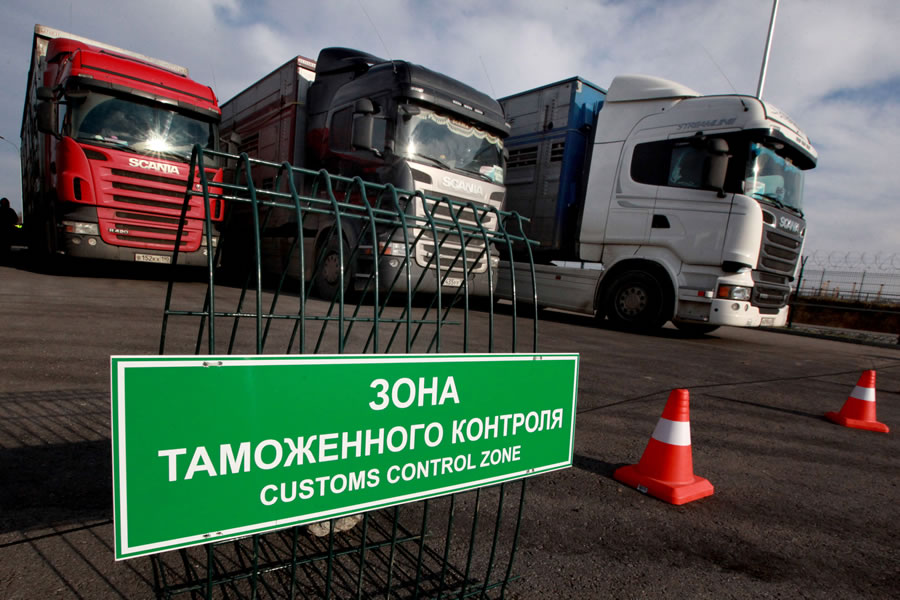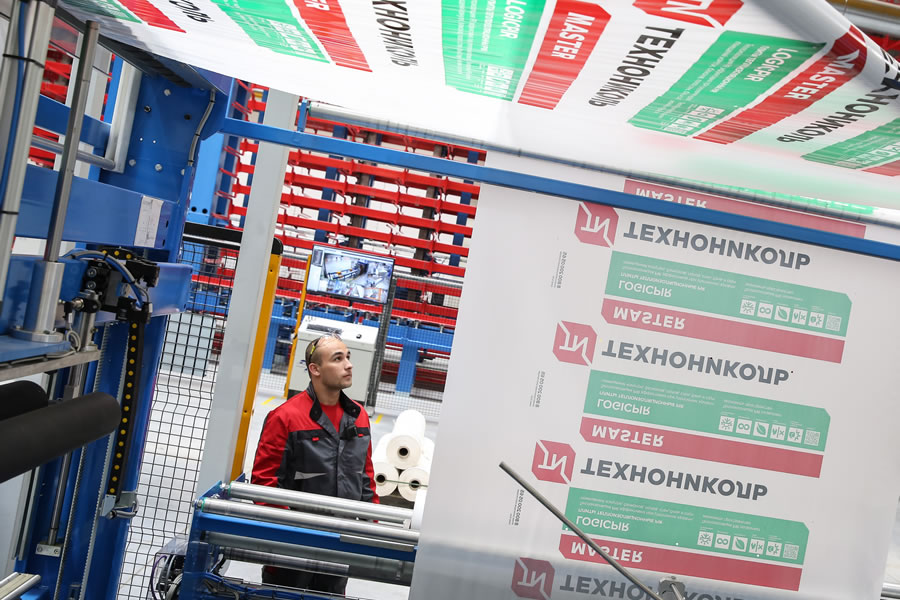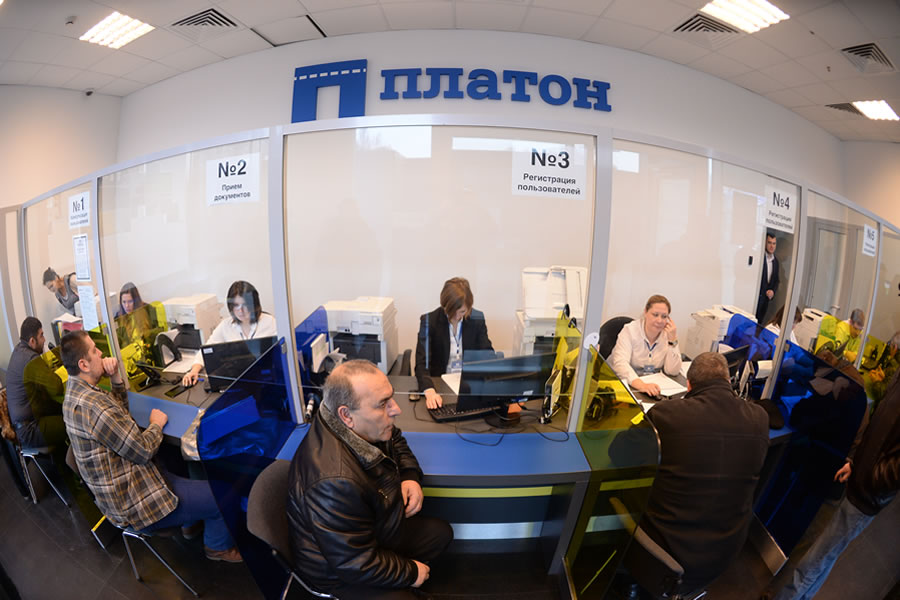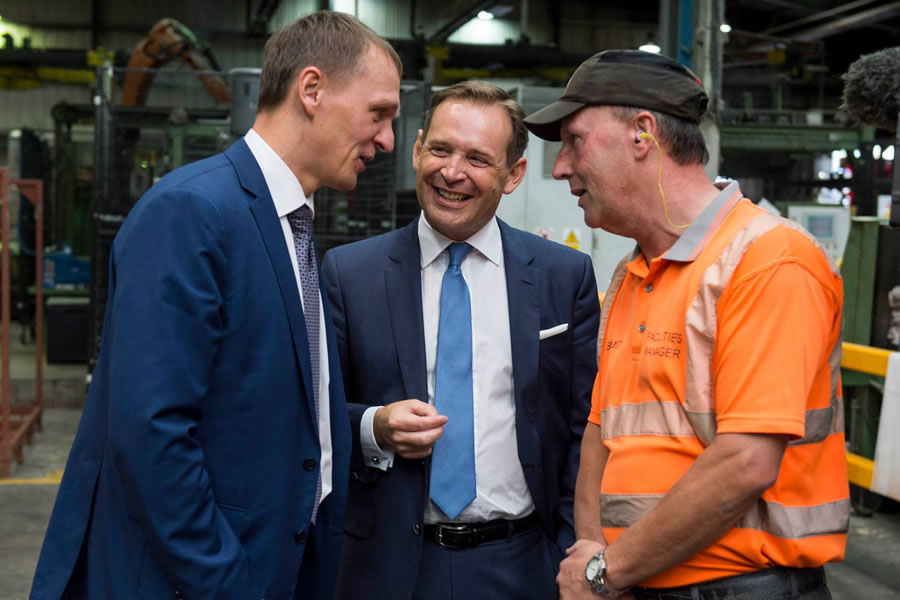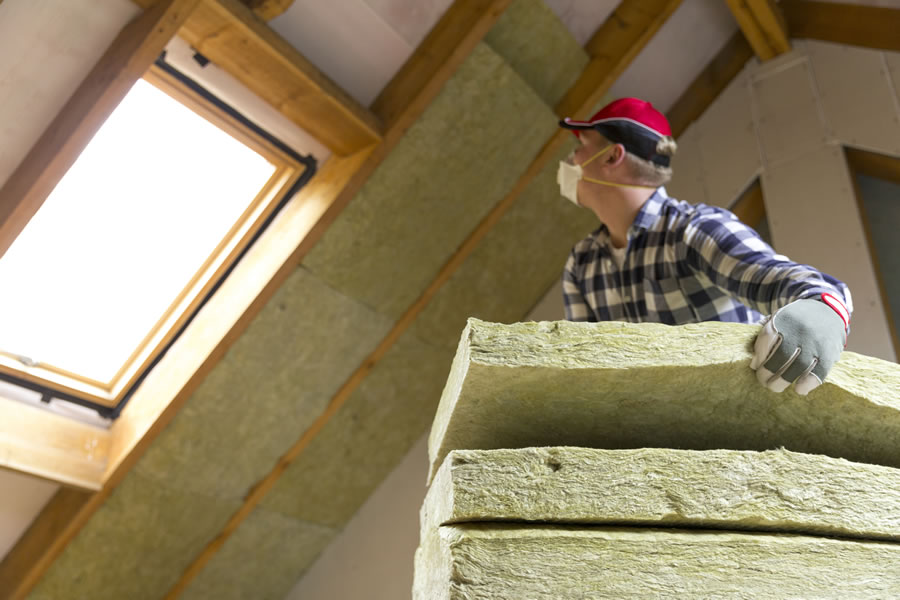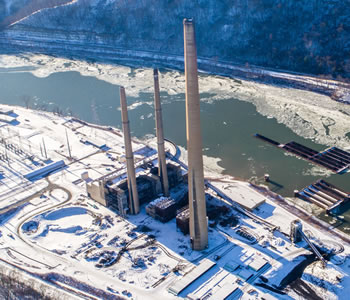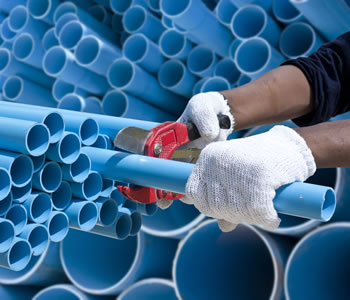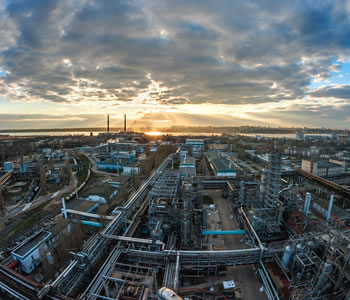In his interview to Expert, Sergey Kolesnikov reflects on the drivers of the European demand for Russian construction materials, potential sales markets in the next few years, energy efficiency requirements in the construction industry, and transition to recycled materials.
TECHNONICOL is one of those companies whose performance can serve as a barometer to gauge the overall health of the Russian and almost all of Eurasian economy. The company has a sales turnover of ca. RUB 80 bn and 52 plants producing modern building materials, and the latter are known to be a key indicator of the macroeconomic environment.

TECHNONICOL is a leading international producer of reliable high-performance construction materials supplying the market with cutting-edge technology that is a combination of the company's in-house research efforts and best global practices. The Corporation includes two large divisions: TECHNONICOL Industrial Company headed by Sergey Kolesnikov, and TECHNONICOL Trading Systems managed by Igor Rybakov.
It would nevertheless be a mistake to use this company’s performance to estimate the overall growth rates of the national economy. We have to remember that this is an extremely high performance company able to respond quickly and on a large scale to any changes in the economic climate, both domestic and global. By no means all are capable of doing this.
Sergey Kolesnikov, President of TECHNONICOL, sheds some light on the company’s strategy in 2018.
Mr Kolesnikov, TECHNONICOL’s revenue grew by 13% in 2017, and based on the results fr om last year and 1M this year, your outlook was positive. You counted on a number of major investment projects, such as renovation, to support this growth in 1H 2018 as well. Have your expectations been met? In 6M 2018, the situation was uneven across different segments. The B2B sector of industrial and civil construction, including residential, is growing at approximately the same pace as last year. It can certainly differ fr om segment to segment. For example, new products, such as spray foam, grow by 300%, this being one of the few items that are still imported. With all the import replacement, this is a good area for us to attack.
The DYI and retail segments have plummeted. We see this fall practically in all retail channels. Producers of other building materials confirm that the retail segment is flat, leading us to the conclusion that there is no consumer demand there.
If we take individual product segments, we deal mostly with heat insulation and roofing. The insulation segment is currently in the best situation. This is especially true for stone wool, the only product that concluded 1H 2018 in high demand. This is partially due to the high demand in the EU. Besides, with the local product deficit taking place in the EU, we increased our export there. It is profitable, with stone wool priced at EUR 600 in the EU and only EUR 380 in Russia.
The insulation, especially the stone wool, segment is currently in the best situation.
Was the European demand handled primarily by your Western plants or did it find its way to the domestic facilities as well?
Obviously, our EU plants have seen the strongest demand, primarily the SuperGlass in Scotland. The demand comes there six months earlier, so we felt it in December and January, and by April the warehouses were empty. However, at that time so were the warehouses of all European manufacturers, and in April, May and June the demand reached Russian companies as well. Not just us – our peers increased supplies to the EU. Fortunately, we have enough capacity to cover that so far.
What drives the demand in the EU? Is it the result of increased investments or decommissioned capacity?
No facilities have been decommissioned, production of heat insulation is on the rise. There are several drivers here. The first one is the general rise in the EU economy. Europe rebounds fr om the crisis and construction ramps up. Second, I would name the growth of power efficiency. Under the Renewable Energy Directive, the EU is planning to fully switch to passive houses by 2020. Such houses would consume nearly zero energy. The energy efficiency standards are therefore getting stricter, requiring more heat insulation materials.
The third reason is regulation. After a recent large fire in England, the authorities started putting strong pressure on fire safety for buildings. So engineers and builders started choosing stone or glass wool over polymer-containing products for big facility façades.
UK engineers and builders gave up polymer-containing products to comply with tightening fire safety standards.
Finally, the fourth reason is related to the deficit of polyisocyanurate in the market. For various reasons, several MDI plants closed globally, and its price in euros practically doubled. That is why people who used to buy PIR sheets (made fr om MDI) for façades and roofing, started buying stone wool, for pricing reasons. However, MDI is gradually getting cheaper now, so I think the price will even out and in a year or two there will be no stone wool deficit to speak of. Even more so, given that our main competitors are building new facilities – Knauf is building a plant on the border with France, Rockwool is building manufacturing facilities in Poland and Romania. So in 2019–2020 there will be no effect left.
TECHNONICOL Industrial Company integrates 52 production sites across seven countries (Russia, Belarus, Lithuania, the Czech Republic, Italy, the United Kingdom, and Germany). The products are sold in 95 countries worldwide. It also includes 6 research facilities and 18 training centres featuring state-of-the-art equipment and qualified personnel where the company develops and launches new products and solutions for the construction industry.
How are you going to handle it?
We will try to sell our mineral wool to the Caucasian states and beyond, to Iran and Turkey. So the export will still be there, but its geography will shift south, where the competition is not as fierce.
Will the demand fr om those southern countries be enough for you? Currently the situation is very convenient for you, with the EU at hand and your new facilities. But what if the EU stops growing, will the demand replaced by the CIS and the rest be enough?
For geographic reasons, our supply radius is limited to 1,000 km fr om the plant. And if the EU refuses, we will supply where we can. True, the Caucasian and Trans-Caucasian markets are not the strongest, but we do not have too much of a choice. In Russia, the market is not growing, either. So sorry, but we do what we can. If the Russian construction market keeps stagnating and the consumption volume goes down, then obviously we will be in the same boat. No export can replace that. Even with stone wool our export share is not more than 10%. So here we are the hostages of the domestic economy.
Generally speaking, this whole export thing I love telling about is not something we readily chose. Some people think it is easy to export goods. In fact, export means less profit and more risks. It’s FX risks, criminal laws controlling FX revenues, more complicated contracts. Export in Russia is not an easy task. Let me reiterate, this is not because we want to but because we have to.
What about the domestic demand? You have named four drivers behind the market growth in Europe. Russia has also seen strong investment demand, and there was the tragic event in Kemerovo moving fire safety issues to the forefront. Another thing is still poor energy efficiency. Have you noticed any growth driven by that?
In Russia, we expect the situation to improve in the second half of the year. One of the constraints was the World Cup. Many construction projects near the stadiums were halted, and some roads were closed during the event. Now, I think those activities will resume. Given high oil prices and a budget surplus, we also hope to see the government increase spending on healthcare, education and infrastructure in furtherance of the relevant presidential decree. So we hope that the demand will pick up in the second half. We have sufficient capacities in place. I will be happy to stop all export to the EU and anywhere else and start supplying our products to Russian construction sites.
TECHNONICOL’s products in the company’s warehouse.
The government has also launched an energy efficiency programme, if I am not mistaken...
Indeed, the Ministry of Construction's order of 1 July 2018 has tightened the energy efficiency requirements in all areas, from ventilation and glass panes to façade and roof heat insulation, to boost energy efficiency by 20%. However, our standard walls remain two or three times thinner than in Europe. In other words, the progress is there, but its pace is quite modest.
You mean the European wall is thicker by 100%?
Yes, it is, even though the climate is milder.
But why such margin?
In theory, a passive house has zero energy consumption.
Why do we not go for the passive house? Because of the costs?
That is a fundamental question. Why has Russia, with all its resources, failed to become rich? Maybe we are not hard-working and smart enough. I am just curious. With the gap so large and the new energy efficiency programme in place, why not migrate to European standards immediately? I think I can see why the Construction Ministry does not want to do it this way. The gap is too big to close it instantly. What we need is evolution and incremental approach. New requirements would come as a shock right now, especially for the construction industry, as they will mean a significant increase in supply and, hence, more investments on the side of manufacturers. At current prices, a facility can break even only in twelve years. And nobody will invest in construction when OFZs are priced so attractively. One would rather buy those and receive tax-free coupon payments.
TECHNONICOL Trading Systems sells construction materials and tools for industrial, civil and private housing construction via 100+ trade offices in Russia and the CIS.
When you start building a facility, you assume a plethora of risks. Entrepreneurs and businesses are the pillars of the country. They are tax agents. As a company, we have to keep records of the employees liable for military service. We have to focus on health and safety and anti-corruption measures as having former government employees implies certain actions. And the list goes on. So when we launch a new business, it comes with a lot of risks. And if we know it is going to generate only a 5% return... We are enthusiasts, no doubt, but we cannot break even at current prices. If the demand shoots up, the prices will do the same. Besides, people have been short of money, causing the retail demand to fall. They just cannot afford more expensive housing. Although a twice thicker wall would add a mere 0.1% to the price of a square metre, the demand would still be affected.
Focus on recycled materials
You have closed some deals recently, including the acquisition of a large facility in Belgorod. And you have two Far Eastern projects in the pipeline.
Indeed, we closed the Belgorod deal in spring. This is a stone wool factory with an output of 90 ktpa. Over three or four years, we plan to ramp up its capacity to 120 ktpa by upgrading the furnaces and automating the production lines, including packaging ones. I think automation will bring the facility closer to our annual labour productivity benchmark of RUB 15 m per employee. It is a very good, modern factory that manufactures high quality products. We are happy to have brought this southern Russian asset into our perimeter. From there, we can ship to Ukraine wh ere the price is higher than in Russia I should say (EUR 570 per tonne), Belarus, Poland and, naturally, Southern and Central Russia.
As regards the Russian Far East, we are planning to invest some RUB 700 m in two local facilities. One of them will focus on PVC pipes and fittings for drainage systems.
The stone wool facility in Belgorod is TECHNONICOL’s 53rd one. Photo: teplo.tn.ru.
Are these products new for your company?
The insulation, especially the stone wool, segment is currently in the best situation, which is partially due to high demand in the EU. Besides, with the local product deficit taking place in the EU, we increased our export there. It is profitable, with stone wool priced at EUR 600 in the EU and only EUR 380 in Russia.
By and large, the products are the same – it is the technological cycle that is new. We purchase the cutting-edge Austrian injection moulding machines that offer quick mould changing and a large high-quality output. Our goal is to make an excellent product at a very high speed – a product that the Far East needs. We used to resale products imported from Europe. Now, it makes more sense to manufacture them domestically. We see a good niche in the Far East and will be able to ship all the way to Irkutsk from this factory, possibly even to Mongolia.
The second facility produces recycled polymers to be used in our construction materials.
Are you going to recycle Chinese polymer waste?
No, we will process Russian materials.
Do you mean the domestic volumes will be enough? They are pretty small, as you know.
We will be importing polystyrene from the Asia-Pacific.
How do you discover such niches?
Our experts travel across the globe and look at what our foreign peers are doing. And we always try to figure out how they have achieved that level of costs. In Japan, we found out that the secret was using recycled materials.
We will set up waste collection in the Far East, put the waste into an extruder and recycle it. The capacities are there – we just need the materials. Naturally, we do not engage in waste collection. But if waste collection and sorting help municipalities in Vladivostok or Khabarovsk obtain a pure enough product, we will be eager to recycle it into something fit for manufacturing construction materials.
Germany collects 55–60% of waste paper, while Russia collects only 10%. A few tonnes of waste paper equal to 1 ha of saved forests, and it is great as feedstock, too.
Since the facility is under construction, you probably have some materials for recycling already, don't you?
Globally, there are huge amounts of polymer waste that nobody collects, and that has become a serious issue. But we have polymer suppliers. In Japan, 92% of polymers are recycled, 60–70% are reused and about 15–20% are burnt, while in Russia, the share of recycling hardly hits 2%, I am afraid. The rest is buried underground. Hence, the environmental and social problems. And it gets no better.
Globally, there are huge amounts of polymer waste that nobody collects, and this has become a serious issue. But we have polymer suppliers. In Japan, 92% of polymers are recycled, 60–70% are reused, and about 15–20% are burnt.
We collect around 10% of waste paper, while the Germans collect 55–60%. A few tonnes of waste paper equal to 1 ha of saved forests, and it is great as feedstock, too. So if we want sustainability, we need to collect plastic and paper waste. And our facilities will recycle it.
China is a problem
When you speak about your projects in the East, you mention Japan, Mongolia but not China. Does it mean that close ties with China are hard to establish? Is logistics still the issue?
First of all, China itself is very competitive. There are numerous industries, especially in construction materials. There are also other intrinsic factors playing against us. The import duty set by China stands at 12% and the number of border crossing points is scarce.
And nothing changes at the crossing points?
Not in summer. Then the trucks with timber form queues. In winter, it is more or less OK.
I mean, the logistics problem in the Far East is not being addressed strategically?
We have a transport corridor to China from Altai Territory but not from the Far East. And it means that even once we have finally crossed the border, we need to reload our goods into a Chinese vehicle losing the time and watching the cost grow. At best, we can deliver in ten days after the order placement. This is not how it works in China. Goods are delivered the next day. So unless you can offer fast delivery, you have to make discounts.
Everybody is cheering us to go and sell but the government is not being very supportive. Besides, there is currency control and criminal liability for unearned foreign currency revenue. Then we would have to ask the Chinese counterparts for a prepayment, and they don’t do that. So yes, we are asked to export...
One of the challenges is no transport corridor from the Russian Far East to China: after crossing the border, the company needs to reload goods into a Chinese car.
...but you cannot?
We want to and we are trying. Last year, we exported ca. 8%–12% of our total production volume. This year, we are down to 5%. In 2017, rouble was weaker and we were trying to hold on to the market. Now we cannot do even that.
So, as I understand, even despite the size, China is not a particularly appealing market as it is too difficult, right? As far as I know, this is the case for many businesses. We did a report on pork market in the Far East, and, say, Rusagro is very cautious about it’s China export prospects.
Yes, the market is very difficult. There was a breakthrough, a sprint start, which took a lot of our money, effort and time, but neither the Chinese nor the Russians understood us. We are still a black sheep in that regard. When I travel around and see what others do, in fact there are only three non-commodity companies – TECHNONICOL, Rusagro and Sollers. It is the coal, transportation, oil and gas companies, and SIBUR that lead the way. So no-one with high added value can penetrate the market?
In European Russia, roads and tariffs are probably no longer a major problem. Tariffs are more or less acceptable. As for the roads, we have gotten used to them. The main hurdle is taxation.
There are numerous problems here in Russia. We build a facility, but there is no infrastructure. Yury Trutnev is trying to solve these problems and there is some progress on the regulation front – free land, for example. But let us be honest – the industrial parks have not solved all problems.
Anyway, we are trying. And we expect at least a thank you but there is none. We are criticised a lot. Then you repeatedly ask yourself what the point is.
Our society works in such a way that if there is no internal motivation and public interest, the question why is bound to pop up every now and then. How long are we going to last in China? Here is an example. There is an ongoing discussion of private-public partnerships (PPP) to develop infrastructure. A trillion US dollars is needed. I always ask the same question – has there been a single PPP project wh ere a private company made it all the way to successful completion? Silence is the answer. Sooner or later, the issue will become relevant for the Far East. And if we have no cases of successful private industrial companies in the Far East, the local market will not be able to support industry development. The Far East is partially the same story as exports. Tax benefits alone will not make the region attractive. We need to build production chains in the Far East and share our success with other investors. Let me stress it again: if Rusagro, Sollers and we fail, it would mean some systemic problems. I do not know in what way, but we do need some help.
Is it easier to work with Mongolia, Japan and other Asian countries? Businessmen often say that in Asia the trade is more active in South Korea, Japan and Mongolia.
Indeed, it is easier to work with India, South Korea or Mongolia. There you can see the result. Going forward, we see ourselves tapping into the markets of Malaysia, India, Mongolia and even South Korea. China is a hot topic in our internal discussions as we incur losses year after year. They may not be critical, but they persist notwithstanding all our efforts. I would not rule out giving up exports from the Far East altogether. But, again, there is a combination of internal and external factors here. A lot has been done, but it was evidently not enough to bring success. We need to address issues related to transport corridors, customs border crossing and Chinese import duties. Removal of duties alone would boost our competitive edge on the Chinese market. If we could drive our trucks all the way to Harbin and Beijing without reload, we would go for another shot, hopefully a more successful one. Our chances are high, and we know what steps we should take to achieve success. But we need help, and I want to say it out loud. Maybe some export decision-maker will hear our plea.
TECHNONICOL’s plant in Ryazan launched in 2006.
Leave the small fry alone
You had to deal with quite a lot of restrictions having to do with the seasonal load weight restrictions and road closings.
I believe the situation is much better this year, meaning that your grievances have been addressed.
It all depends on the region. In some regions they have addressed our complaints. These include Moscow, the Moscow, Leningrad, and Ulyanovsk Regions. In many regions, there were no road closings at all or they were very limited. In other words, even if there were some restrictions, they were not as stringent as before. Unfortunately, I can’t say the same about the Ryazan Region. We need to build on this progress.
At the federal level, this issue has been resolved. The federal authorities do not close roads. We are ready to pay additional fees within the Platon road levy collection system, because the road wear is higher in the spring due to inadequate pavement. We do understand this and are willing to pay extra, but we are not ready to halt our business. It affects us as much as it affects the regional and federal budgets.
Still, according to your experts, inadequate transport logistics in Russia remains a major development hurdle for TECHNONIKOL.
I would say that in European Russia tariffs and roads are not much of a problem, as the tariffs are more or less acceptable, and we have got used to the roads. The main hurdle is taxation.
Manufacturers are willing to increase their contributions to the Platon toll system, as the road wear is higher in spring due to inadequate pavement.
I will explain why. Our government keeps talking about the need to develop medium and small businesses. Transport companies are in fact small businesses. In Europe, for example, there are 2 million transport companies that employ close to 2.8 million people. In other words, one company has an average of 1.5 employees. Naturally, 95% of the market belongs to about 20,000 companies, which are mostly large businesses, while the rest are the ones with 1.5 employees on staff, including a driver and a logistics specialist. So, this is precisely wh ere we are hoping to get and what we should support.
A production facility with a capacity of 300–600 ktpa is well overdue in Russia. I estimate that the current demand for isocyanates is about 150 ktpa. It is a very high-margin product.
What happens to this support in reality? As a large business, we work with tens of thousands of transport companies. Our selection criteria are very strict. We check our business partners, with our representatives visiting their offices to go through their financial documents, regulations, tax records, and everything else that has to be checked. Every three months we ask for their tax returns. We spend about five percent of our 79 billion revenue on transport companies, which amounts to around three to four billion per year. Today, we are waiting for a decision from the Tax Service. It turns out that these transport companies work with some other contractors. While they do pay the VAT themselves, and we can verify that, it is quite possible their contractors fail to do that on occasion. Plus, these contractors might have contractors of their own. The Tax Service has told us that they have no intention of trying to collect taxes from these minor contractors, and they would rather collect them from us, since we do have the money to pay. I can’t but reject this. We pay all our dues. We go as far as verifying that our contractors do pay their taxes. However, we are unable to check whether contractors of our contractors pay theirs. We would rather stop transporting goods all together.
So, as strange as it may sound, our major problem is not logistical. The key hurdle has to do with the regulating agencies’ desire to maximise their regulating power as opposed to boosting economic development as a whole. This is despite the fact that the economy has not actually been growing for 11 years, while the VAT collection rate has been rising exponentially, going up 20% per year. How is this possible? Will this continue for ever? I think that sooner or later painful decisions will have to be taken.
Sergey Kolesnikov visiting SuperGlass. Photo: facebook.com/superglassinsulationltd
I have asked the Chinese how they approach the small business taxation. They say they turn a blind eye up until a small fast food stall owner buys a restaurant. This is a very reasonable approach. Even fishermen are not allowed to use fishing nets with cells smaller than 10x10 cm in diameter. Why? Because you are not supposed to catch the small fish. It still needs to grow. Government agencies should have some patience and wait until the small fish becomes medium-sized at the very least. It does not have to be equal for all, with large companies being taxed more and the smallest businesses getting exemptions. I call for some reasonable solution, as getting them to pay taxes could cost more than they owe. Even if they do not pay, just leave them alone. Few of them have a chance to evolve into large businesses. Some will give up their business to join the wage-workers. Those who manage to grow will sooner or later get big enough to be easily taxable. For now, let them pay as much as they can. Placing them under a heavy tax burden and trying to control each and every small contractor to collect an extra five million a year is just insane.
There is a high-margin niche
You have also raised a concern about the fact that some of the primary feedstock used in your products is not manufactured in Russia, making you dependent on foreign suppliers.
This mostly applies to chemicals.
I am primarily talking about isocyanate production. This is one of the basic polymers.
There are some strong players on Russia’s chemicals market. In terms of polyethylene and polypropylene production it is SIBUR. Other players include Nizhnekamskneftekhim and Lukoil. The production of bulk chemicals is well developed in Russia, but we should also focus on medium-tonnage chemicals, isocyanates in particular. I believe that a production facility with a capacity of 300–600 ktpa is well overdue in Russia. I estimate that the current demand for isocyanates is about 150 ktpa. It is a very high-margin product. It can be used in a wide range of goods: auto interior trim, dishwashing detergents, mattresses, rigid polyurethane foam for thermal insulation of facades, sandwich panels, and spray foam. They are also used in ship building and piggeries, for example. Isocyanates are virtually non-combustible and have excellent thermal insulation properties. In other words, they are a great niche product. We have been importing them in significant quantities. So far, however, nobody seems to be interested in filling that niche.
The Construction Ministry is planning a 20% improvement of housing energy efficiency in Russia.
Nobody is interested in launching isocyanate production?
An MDI plant with a capacity of 300 ktpa would require some EUR 400–600 m in investments. In Russia, some projects are inaccessible to ordinary investors. They can only be implemented by large companies as potential feedstock dependence issues may come up. Building a plant without having access to feedstock means that your project is doomed to fail.
VAT: prices are set to rise
Is the 2% VAT increase significant to you?
It is significant for everyone since we will be caught between the need to increase prices and the potential decline of customer purchasing power. Most likely, we will not raise prices by 2% from 1 January and will probably have to use our own resources to tackle the situation. However, we will still have to pass this two percent increase on to our customers towards the beginning of the season. I know that customers are not happy about it, but...
In other words, you do not think that this decision was well justified? The reasoning is that the money is raised to invest in those markets wh ere you will be selling your products at the end of the day.
I think in six years the answer to your question will be more than obvious. If we do not see some 4–6 percent economic growth per year, a revived infrastructure, an enhanced education and medicine, it will mean that these measures have once again failed and the money has been wasted. In fact, that money is taken from the most active and efficient segment, which knows wh ere to invest it and how to earn returns on the capital, and given to the most inefficient segment, called the "Russian bureaucracy". Therefore, we will know the answer to that question by the end of the six-year cycle. The question is whether we will be able to talk about it openly. Even when we criticise certain things, we still do it in vague terms, trying not to articulate whose decisions they are that we criticise.
I recently attended a meeting at a ministry wh ere they talked about the goal to increase non-commodity exports from USD 120 bn to USD 250 bn. My first question was: Whose goal is it? The answer was: Yours. There were six business people and 22 mid-level government officials at that meeting. I had to clarify whether in fact it was the government’s goal. They finally had to admit, after being prompted, that it was indeed the government’s goal. In other words, people working in the government do not seem to realise that is ultimately their responsibility. It appears that the business is responsible for each and every goal. But how are we supposed to achieve the goals without having any leverage?
Returning to the question about the VAT increase, in the final analysis it appears that we are squeezing out a dry towel and giving whatever is left there to the government. If it turns out once again that the government has failed to use these funds efficiently, then the question as to who should be held responsible will be more than relevant.
Download PDF


